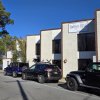Sussex to take part in Blue Zone initiative
This version includes the correct spelling of Kim Blanch, co-founder of Blue Zone Project Delaware.
Blue Zone is a community-led effort that helps people lead longer, better lives by making healthy choices easier.
Sussex County Council has been asked to become an active partner to help lay out the framework for a Blue Zone in the county.
Blue Zone Project Delaware co-founder Kim Blanch, director of Beebe Healthcare community outreach, made a presentation during council’s June 25 meeting.
She said projects and initiatives within the Blue Zone would tie into the county’s comprehensive plan.
“Blue Zones have helped towns, counties and states meet the goals of their comp plans and community wellness initiatives,” she said.
The Power of Nine drives a Blue Zone based on movement, the right outlook, eating wisely, having a purpose and connecting with others, and putting loved ones first.
Most people live within a 20-mile radius 90% of the time. “These are the areas Blue Zone looks at,” Blanch said.
In existing Blue Zones, organizers said there have been double-digit drops in obesity, smoking and body mass index, with millions of dollars in healthcare cost savings and measurable drops in employee absenteeism.
About the process
The steering committee will head a six-month process known as Ignite Assessment to look at policies, people and places, as well as infrastructure, and the county and towns’ comprehensive plans that will lead to the transformation process.
“We would like the county’s support and engagement through the assessment process,” Blanch said.
“We will certainly come to the table,” said Council President Mike Vincent. “We want to be involved. We know we have healthcare issues. We will stay informed and stay involved.”
“There is a lot of opportunity, but we need to do something differently to bring all great works together,” Blanch said.
She said the five towns selected to pilot the program are Lewes, Seaford, Millsboro, Georgetown and Milford. A mid-July kickoff is anticipated.
Blanche said a multi-day planning and brainstorming event is being scheduled for September. “We would like the county working with us helping and discussing possibilities,” she said.
Several key stakeholders will be part of the process, including community-based organizations, schools, businesses, state agencies, land developers, local governments, community leaders, faith-based groups, local advocates, healthcare systems, volunteers and nonprofits, with a goal of establishing community partnerships.
“National Blue Zone staff assist through the process, but the implementation will be through us by us,” Blanch said.
She said Beebe Healthcare was the first organization to get involved and is working toward Blue Zone certification.
“The goal is to create infrastructure, policies and a foundation to create an environment where healthy choices become easier choices,” Blanch said, adding there are cost-saving potentials as more and more people choose to live healthier.
A local Blue Zone chapter would develop a blueprint and timetable for implementing changes in lifestyle that could, ultimately, save millions in healthcare costs.
“There is an incredible amount of great work happening in multiple sectors across numerous agencies. The Blue Zone Project has demonstrated a framework that can bring all of that together that expedites the efforts and the potential for more sustained outcomes,” Blanche said.
In a Blue Zone
According to the Blue Zone website, initiatives go beyond behavior changes and improve community health by making permanent and semi-permanent changes on multiple levels. “We improve or optimize city streets, smoking policies, bike lanes, sidewalks, public spaces, parks and lakes and walking paths, schools [cafeterias and safe walking paths to school], restaurants, grocery stores, employers, faith-based organizations and community involvement.”
Improved public transportation is also a component of Blue Zones.
Councilman Mark Schaeffer said many of the proposed initiatives have already been implemented by the county, including improved interconnectivity between parcels and a master planned district. “We have reduced congestion, reduced pollution and we encourage walking,” he added.
Consider the following
In Delaware, 73% of adults are overweight or obese; 33% of children are obese; 25% of adults have diabetes; 36% have high blood pressure; 149,000 adults have a mental health condition; 33% of adults suffer from anxiety or depression.
In the state, in 2021, more than $9 billion was spent on healthcare, which was an 11% increase from 2020; the state spent $2 billion on Medicaid insurance plans for state retirees and employees; nearly 40% of the state’s operating budget is spent on healthcare; pre-diabetes and diabetes cost the state $1.1 billion annually; and the state spends $1.2 billion to provide health insurance for active state employees and their families, retirees and state pensioners.
Blue Zone organizers say there is proof in current Blue Zone sites that healthcare costs can be impacted and decreased.






















































